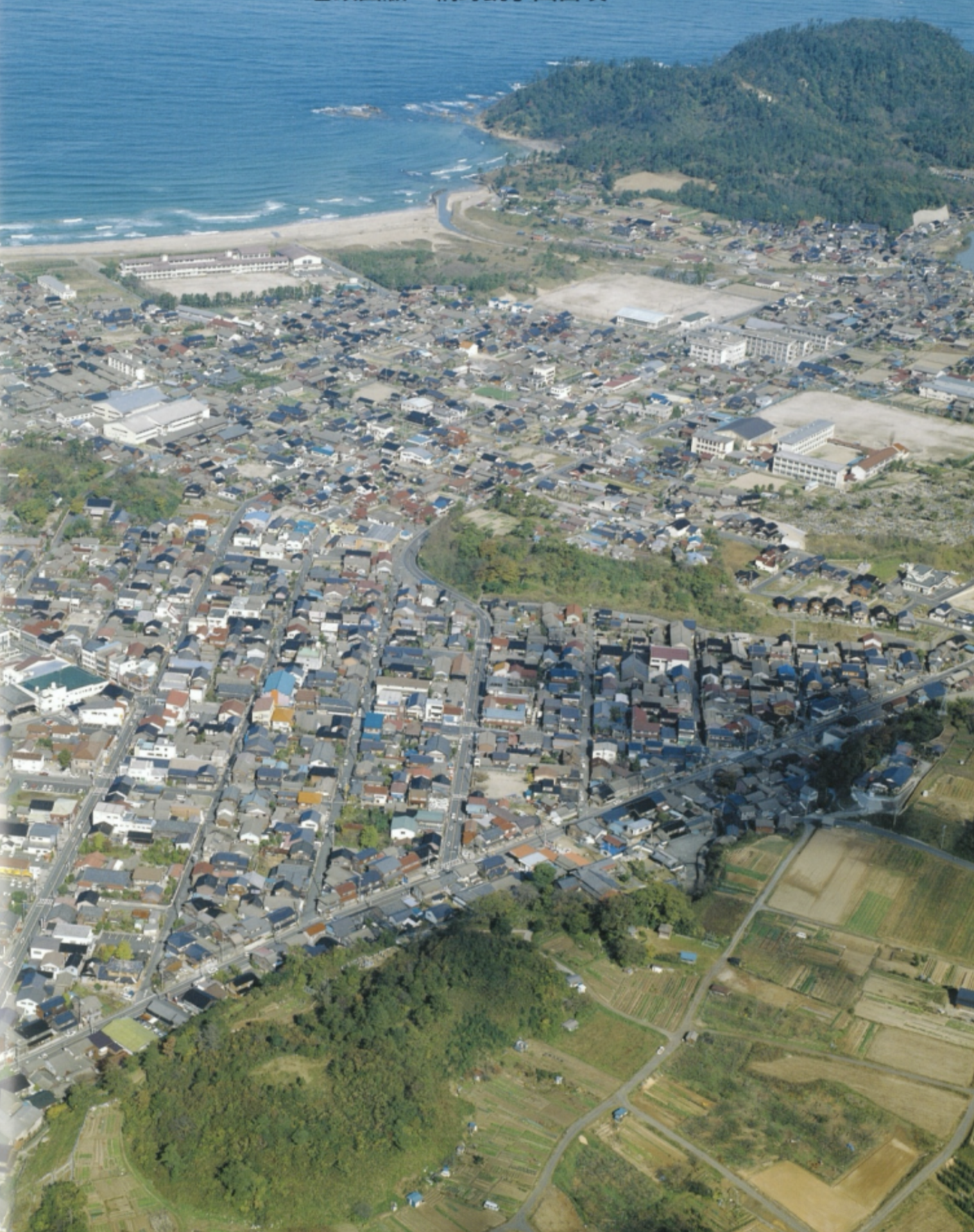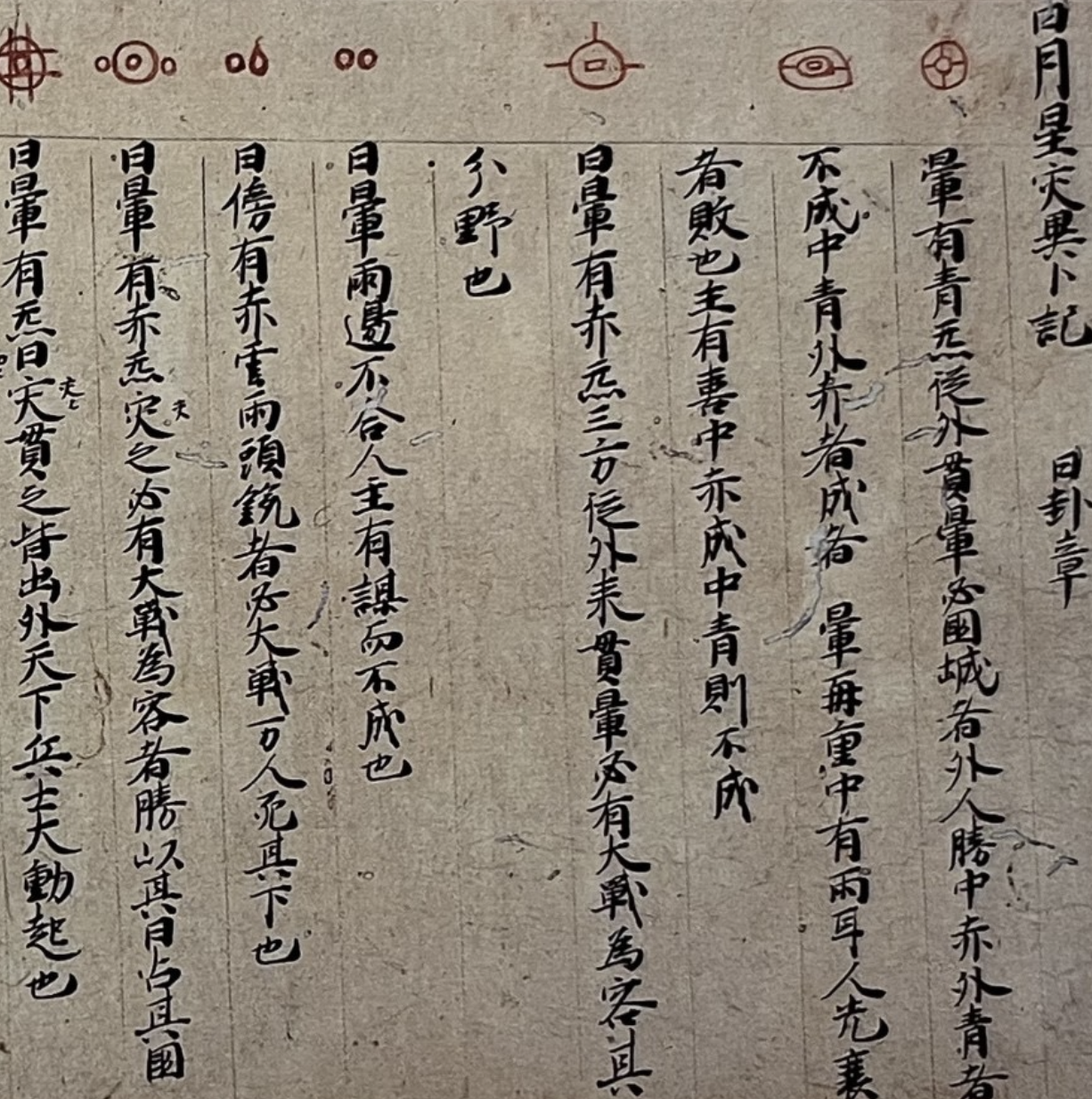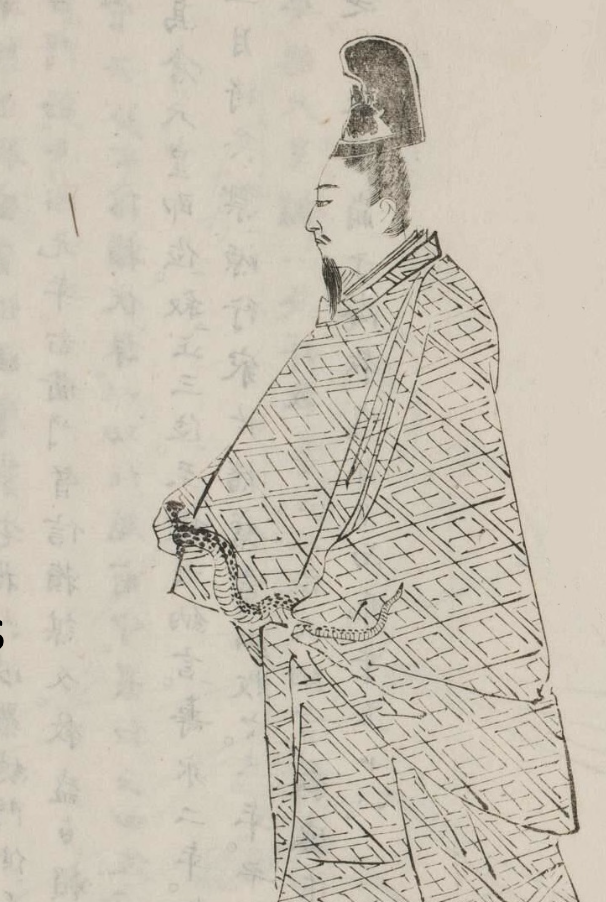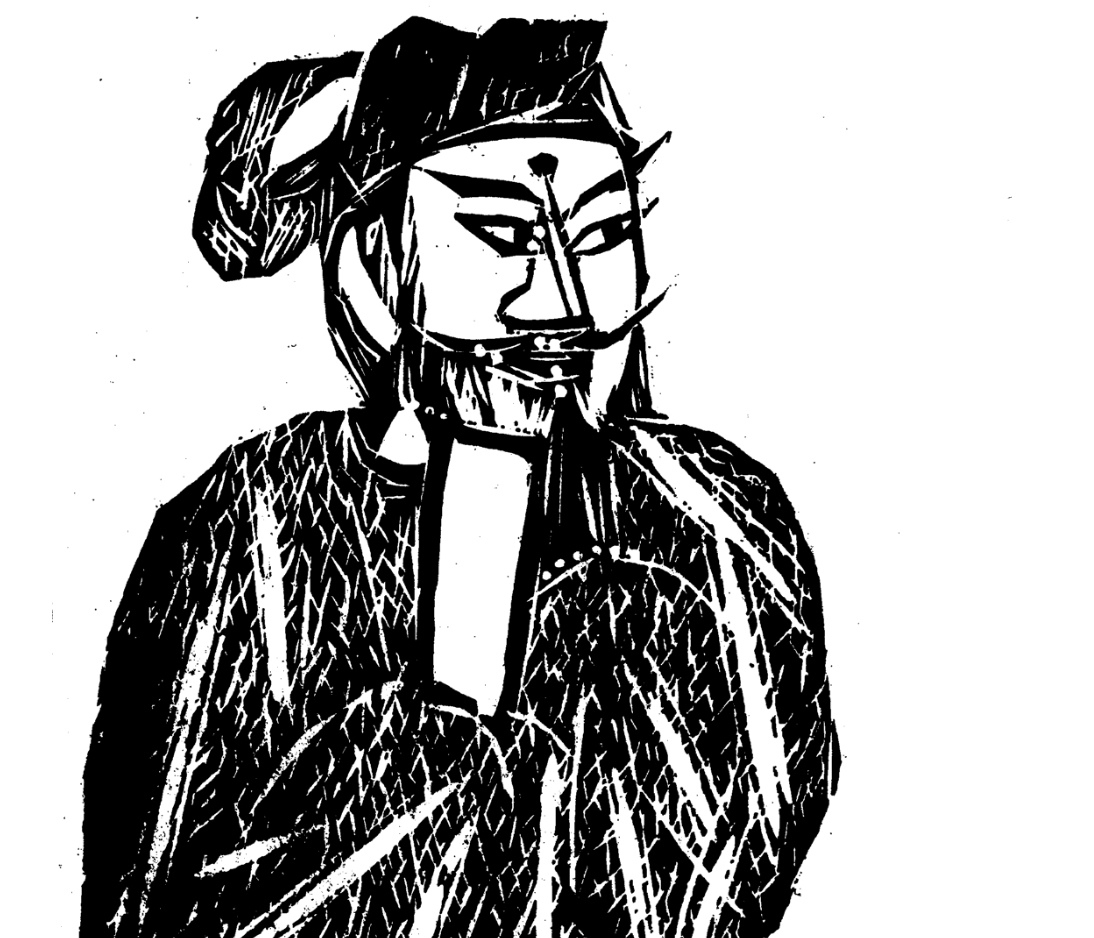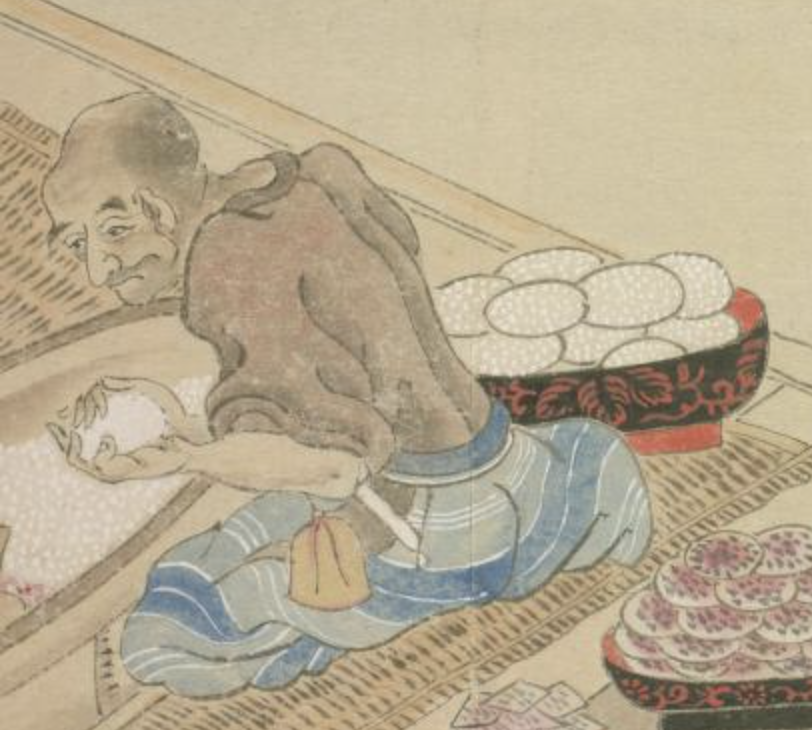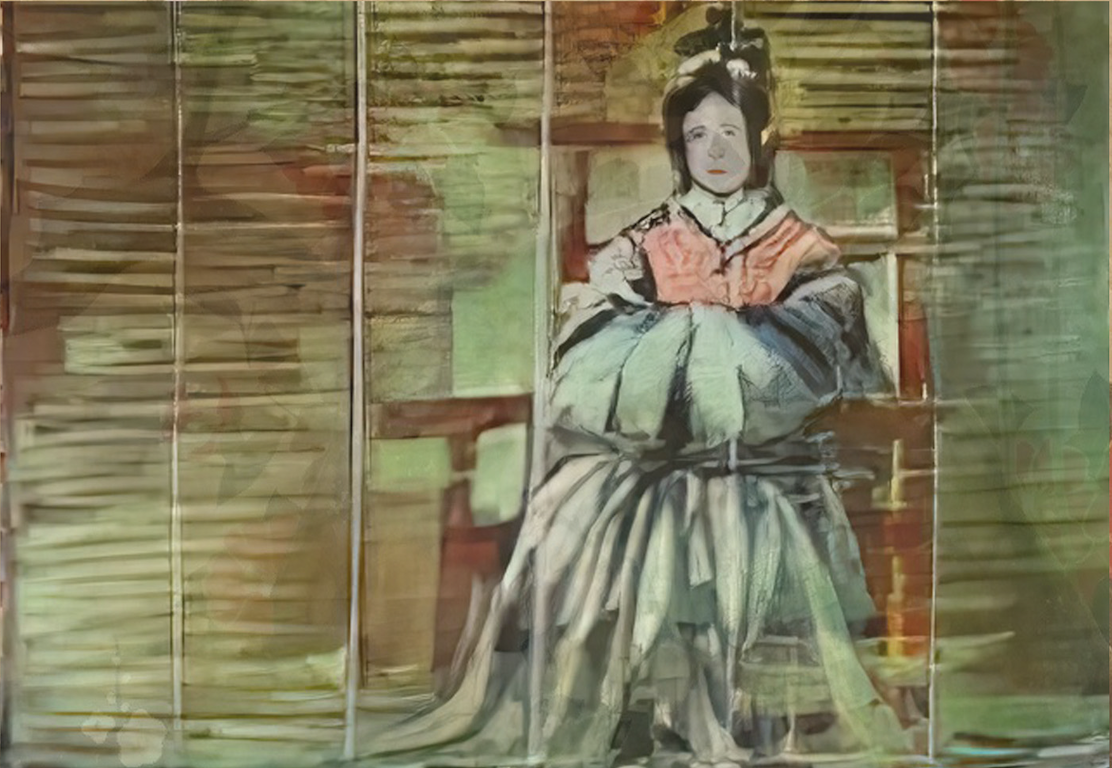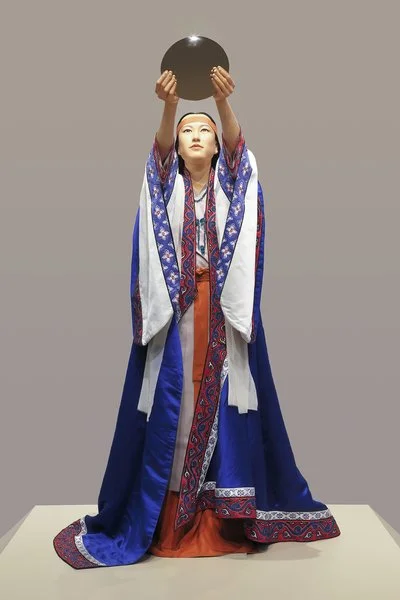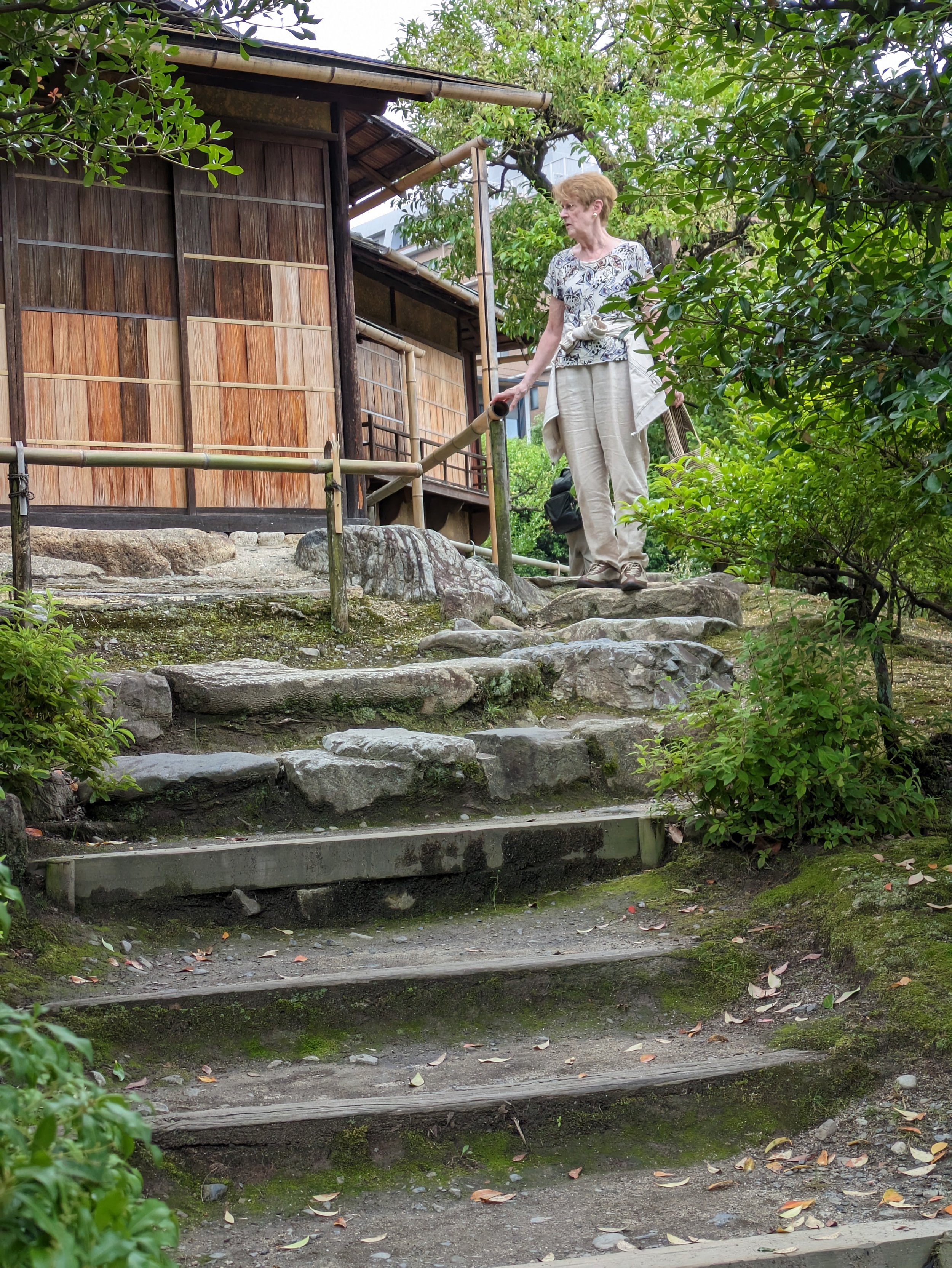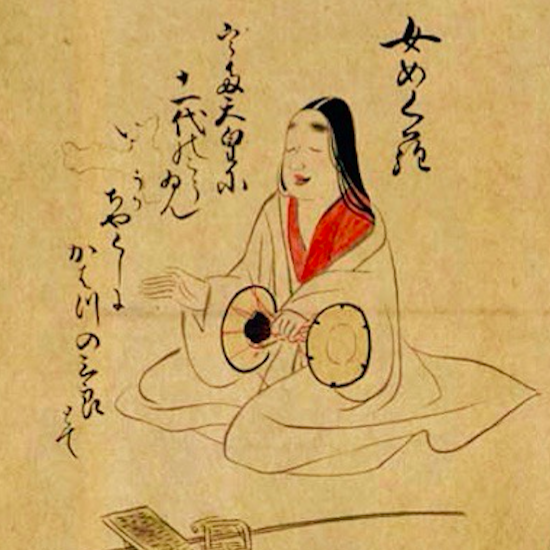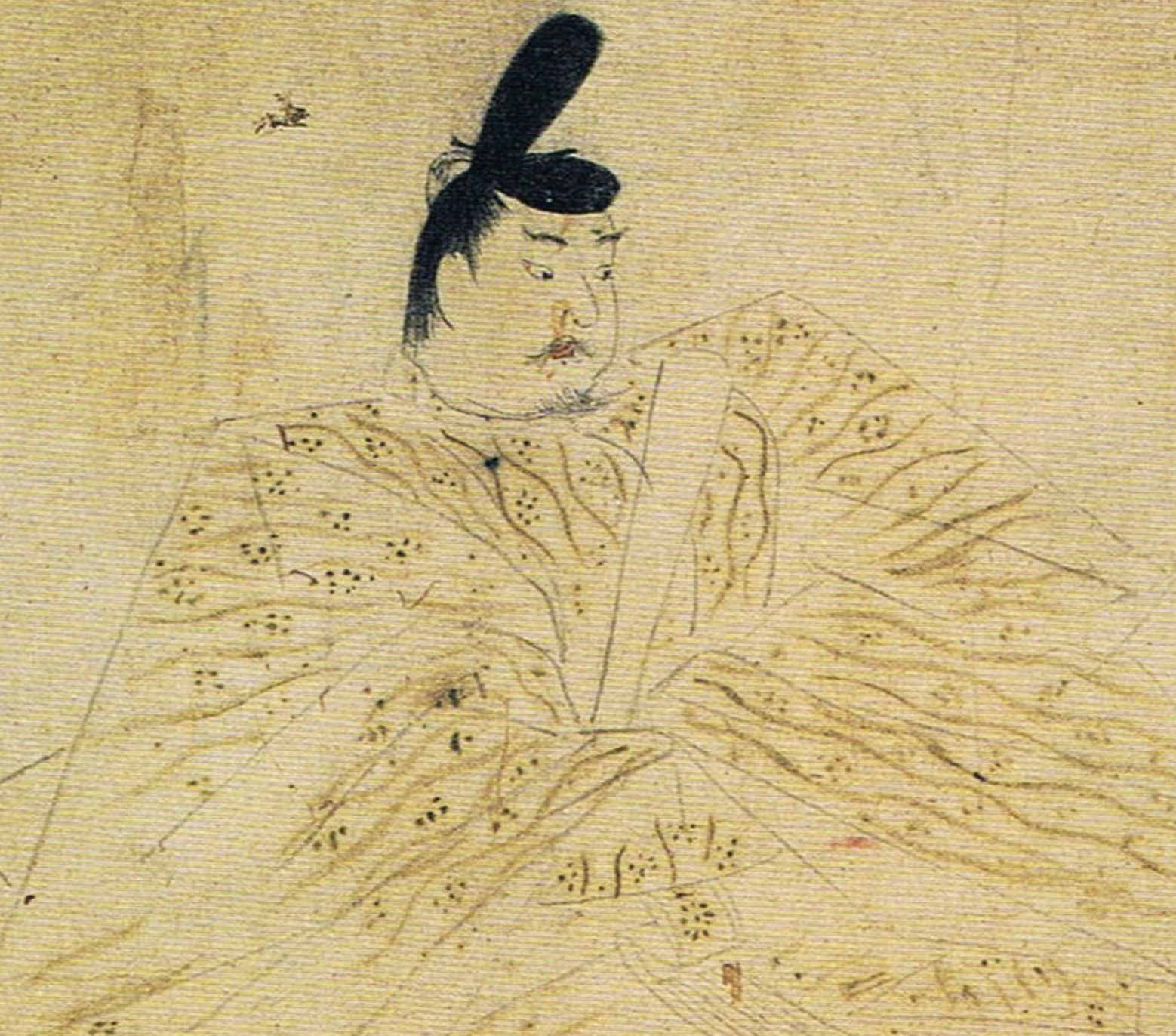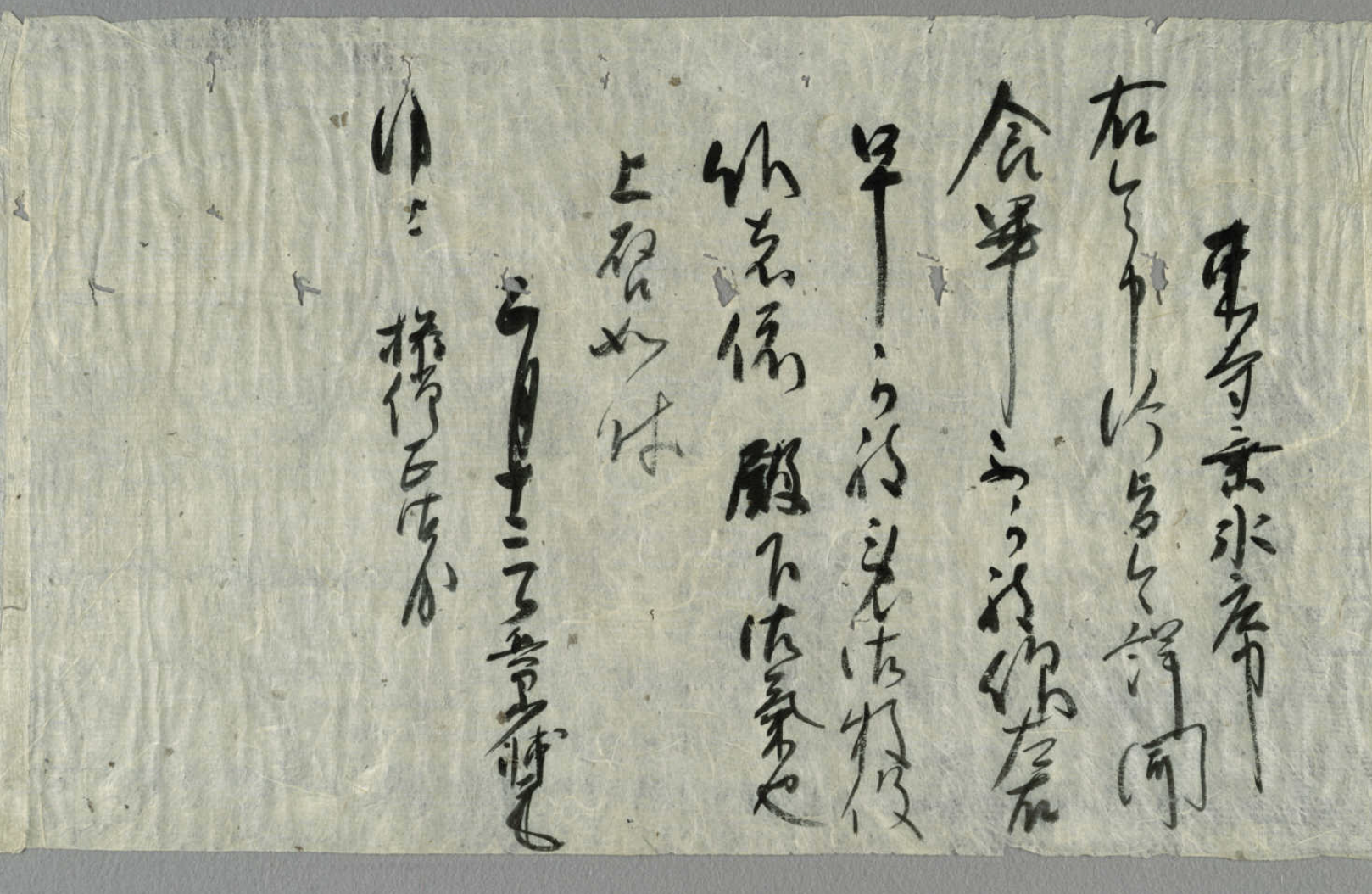Channel link: https://www.youtube.com/@sachikoexploringhistory
前回の報告では、YouTubeチャンネル、「Sachiko Exploring History(Sachikoの歴史探検!)」(https://www.youtube.com/@sachikoexploringhistory)を紹介し、それを始めることになった誘因や目的について説明した。今回は、修善寺への旅という一つのトピック(ロケーション)に焦点を当てつつ、それに関する動画を見ることを通して、「Sachiko Exploring History」の目指す目標や課題を紹介したい。その際には、以下二つの点に注目する。一つ目は、地域社会がその場所で起こった過去の事件をどう「記憶」しているのか。また、通説とその「記憶」にはどんな相違があるのか。二つ目は、現代日本の地方文化・史跡・食・景観等を動画にまとめることで、現在と過去がどう絡み合っているかを伝えることはできるか。また、そのためにはどのような工夫が必要か。そして、もし時間があれば、YouTubeの分析機能やプレイ・リスト、編集過程などを紹介し、動画作成のやりがいや今後の課題についても説明したい。
12:15 Lunch
1:30 Yoko Shirai, USC PPJS, “Figured Buddha Tiles at Yamadadera”
Fired clay images of a buddha in relief (senbutsu), often covered with gold leaf, were excavated in Japan at ruined Buddhist temples. Affixed on flat surfaces as “sacred decoration” (sōgon or shōgon), these golden embellishments illuminated interior spaces at temples located predominantly at or near the earliest capital cities established between the seventh and eighth centuries. Made using molds, this study focuses on a specific type unearthed in large quantities during archaeological campaigns at the Yamadadera ruined temple site and at Sekkōji (Nara prefecture). A nearly identical foreign model, prototype, or mold was identified for other types of mass-produced senbutsu discovered in Japan; however, this type is distinct because, as argued by the author, the original model used to make the mold was likely designed in a local workshop, not abroad. Of special interest is the proposed method of how the model was “newly” created: two other senbutsu (with a foreign prototype) were copied, and then combined, to create a new composite model. The resulting senbutsu is both old and new, simultaneously. Choices made in the configuration and embellishment of a sacred space reveal both local workshop practices and the needs of sponsors who funded the new construction projects—in this case, a linked series of temples whose exterior layout and interior design are closely examined by the author. This study identifies the donor family as relatives of the female monarch, Jitō tennō. Political rivalries and anxieties within the extended family led to two untimely deaths after accusations of treason (Jitō’s grandfather and nephew), and because Yamadadera and Sekkōji were completed after their deaths, the installation of a large quantity of a related senbutsu at only these two temples—according to the archaeological evidence—suggests a funerary context for these Buddhist structures that were presumably vowed or supported by family members and shared a workshop. Yamadadera and Sekkōji functioned as sacred, memorial halls to appease the dead and, in turn, protect the living on earth from possible repercussions by vengeful spirits.
日本の限られた仏教寺院・廃寺跡から、金箔で覆われた焼成粘土製の仏像(塼仏)が出土しています。荘厳(そうごん・しょうごん)として寺院内の一部に貼り付けられ、金箔は寺院の内部空間をイルミネーションしました。本研究は奈良県桜井市の山田寺遺跡と葛城市の石光寺から考古学調査で大量に出土した「山田寺タイプ」の塼仏に焦点を当てています。型を使用して大量生産された塼仏は他にも「三尊タイプ」と「阿弥陀仏タイプ」が奈良県から発見されていますが、その型の原型、あるいはプロトタイプは、唐や新羅の同類遺物が確認されています。しかし、著者が主張するように、「山田寺タイプ」の原型は海外のモデルを元にされたのではなく、地元の工房で設計された可能性が高いため、独特です。特に興味深いのは、この原型がどのようにして「新たに」作られたかという提案手法である。すなわち「三尊タイプ」と「阿弥陀仏タイプ」を組み合わせ、新たな複合模型を作成した説である。工房はなぜ、現存する「古い」タイプの塼仏をわざわざ使用して「新しい」タイプを製作したのでしょうか?保守的な工房製作システムがこのような方針を選んだのか。それとも、工房へ指示した発願者の希望で「山田寺タイプ」の塼仏が誕生したのか。肝心なポイントは、大量の「山田寺タイプ」の破片は、山田寺と石光寺のみから出土しています。製作と建築物としての使用が限定されていました。「山田寺タイプ」の製作年代は天武・持統朝と一般的に推定されており、本研究は、持統天皇とその家族が「山田寺タイプ」の原型と型・范を工房に作らせ、完成した原型や型を保管・管理した考えです。
山田寺は、持統天皇の母親の父(祖父)が建立を開始されましたが、完成する前に謀反の疑いに責められ、山田寺で命を落とします。持統天皇の姉の息子(甥)も同じく、謀反の疑いで命を落とします。石光寺の歴史は不明な点が多いですが、現在の石光寺、もしくはその周辺の古代寺院が持統の甥の慰霊堂として建立される説を本研究で追求しました。山田寺と石光寺は、死者を鎮め、ひいては怨霊の報復から現世の生者を守るため、持統天皇・天皇家・天皇と縁が近い地元の豪族が「山田寺タイプ」の原型か型の使用が許可され、石光寺や近くの寺院内を荘厳したのであろう。
2:30 Andrew Tschirki, USC School of Religion, “Shōkū and the Nyoin Gosho: Centering Elite Women in Medieval Pure Land Discourse”
The thirteenth century Nyōin Gosho is a document that can be best understood as a didactic tool for teaching Pure Land doctrine. But, as the title indicates, it is also a document that is centered on royal women. This series of eleven letters allows the reader to dive into the religious world of a thirteenth century nyōin and learn of her concerns, doubts, and fears. Throughout the course of these letters, her interlocutor goes to great lengths to help her to understand the doctrine and alleviate her concerns. Through this dialogue, we are able to see that the Pure Land tradition was active at the center of Kyoto’s aristocratic society. It can also be said that royal women were expected to not only perform the nenbutsu but have the proper understanding of intricate doctrine. Thus, the Nyōin Gosho is a doctrinally and culturally rich document, ripe for examination.
13世紀の『女院御書』は、浄土教の教義を教えるための教化的な御文として理解するのがベストである。その題名が示すように、この文書は貴族的な女性(女院)を中心に据えている。この十一通の御文を学ぶことで、13世紀の女院の信仰生活、つまり、女院の関心・疑問・恐れを知ることができる。御文の中で、彼女の対話相手は、教義の理解を助け、心の不安を取り除くために熱心に教えている。この問答を通して、浄土教の教えが京都貴族社会の中で流行っていたと見える。また、この女院は単に念仏を唱えるだけでなく、教義を細かく理解すべきだと相手の僧侶に期待されていたことも分かる。したがって、『女院御書』は教義的にも文化的にも豊かな資料であり、詳細な検討に値する御文である。
3:30 Aito Shimizu, Meiji University, “When Officials Didn’t Show Up for Court Events”
Ceremonies in ancient Japan were conducted by the emperor and governmental officials as a part of their political activities. In the ninth century, manuals, such as Dairi-Shiki, were compiled, detailing procedures of conducting various ceremonies, and ceremonies came to be more and more organized. At these ceremonies, the emperor and the subjects periodically gathered at the same place, thereby strengthening the ties between them and maintaining the order and unity of governmental officials. Indeed, ceremonies functioned as an important apparatus of ruling the state.
On the contrary, sources mention that already in the eighth century governmental officials were absent from rituals that they should have attended. For example, when governmental officials who would have been appointed to new posts or who would have been conferred higher court ranks were absent from ceremonies conducted for them, and they sent substitutes to the ceremonies. This tendency continued well into the ninth century. This is evident when examining codes for penalties for being absent from ceremonies to offer tributes to imperial mausolea. The penalties became harsher and harsher, which clearly indicates that absence from ceremonies became more and more common since the eighth century.
This tendency became even stronger in the tenth century and after. Noble messengers who were sent to mausolea to attend ceremonies and rituals to pay tributes (荷前使nosaki no tsukai) frequently did not show up. Accordingly, the government had to let local people who lived in the neighborhood of a mausoleum to carry out the duties. At other ceremonies, the master of a ceremony frequently did not show up, and a substitute had to conduct the ceremony. A background to these phenomena was, I speculate, that in the ninth century absence of government officials from ceremonies where they should have attended became the norm since the eighth century, and that procedures of conducting ceremonies by substitutes in the absence of the master of ceremony and legal framework governing these cases were already developed. In other words, rather than abolishing absence, the central government maintained the policy to conduct ceremonies no matter what, tolerating the absence.
Handout (Japanese)
4:30 Jan Goodwin, USC PPJS, “Resilience and Resistance: Outcasts in Late Medieval Times”
Sunday
11:00 Prof. Ken’ichi Sasaki, Meiji University, “Report from the Field, Kofun Culture in the Vicinity of Kashima Shrine”
In the past summer, I conducted an eight-day excavation at a 40-meter long keyhole-shaped mounded tomb, built in the second or third quarter of the sixth century. The mounded tomb is located in Hokota City, southern Ibaraki Prefecture, which happens to be a northern neighbor of Kashima City where Hashima Shrine is located. The excavation resulted in the discovery of two haniwa ceramic cylinders in situ, and revealed that the width of the frontal section was two meters wider than now. We also collected a fragment of haniwa ceramic human figurine. Although we conducted the underground-penetrating radar survey, we could not find the coffin, which was presumably destroyed by a looter. In order to put these results into a regional perspective, I will also review the history of mound constructions in the region surrounding the ancient Kashima Shrine.
常陸国鹿島郡における前方後円墳発掘調査記
今年の夏に、茨城県鉾田市内の全長約40mの、6世紀に築造された前方後円墳の発掘調査を行った。昨年石棺蓋を発見した地点を中心に発掘し、前方部の幅が現在より約2m広いことがわかった。地下レーダー探査を行ったが、石棺の身を発見することはできなかった。その他の成果として、円筒埴輪2本を古墳時代に樹立された場所で発見した。また人物埴輪の腕の破片も採集した。今回の成果を地域史に位置づけるため、近隣の古墳の調査成果も併せて紹介する。
12:00 Lunch
1:30 Taiji Sasaki, Meiji University, “Effects of Citing a Waka in a Noh Song: ‘Is it the same moon as before? Is the spring the same as before?' in Oshio and Unrin’in”
A waka composed by Ariwara no Narihira, “Is it the same moon as before, is the spring the same as before, although I myself remain unchanged,” has been cited in several Noh songs. The waka was originally included as “Love Song # 5” in Vol. 15 of the Kokinwakashū and in Chapter 4 of the Ise Monogatari. Citing waka in Noh songs is called inka, and famed composers such as Zeami and Komparu Zenchiku considered it an important technique for the composition of noh songs. There are various patterns of inka, such as only citing a representative phrase of the waka, or the first half of a waka, or the latter half. At present, research continues as to the significance of citing a waka in the context of a Noh song and how the waka was cited.
In my presentation I approach these issues with special reference to the citing of “Is it the same moon as before,” in the Noh songs of the two plays, Unrin’in and Oshio. The two songs have similar structures and patterns in the ways the stories unfolded. Moreover, “Is it the same moon as before” is cited in the same context. And yet, while “Is it the same moon as before” is cited without any changes of words in Unrin’in, the later half of the song is altered in Oshio. I hypothesize that differences in theme and the roles of Narihira as hero in the plays are related to the significance of citing the same waka but in different patterns.
Handout (Japanese)
2:30 Louis Hou, USC EALC, “Becoming ‘King of Japan’: Diplomatics Between Japan and Other East Asian States, 1268-1368”
In this paper I reconsider Japan’s diplomatic identity and East Asian geopolitics between 1268 and 1368 by reading titles, delivery routes, and reception practices as the infrastructure of interstate recognition. Focusing on the semantics and uses of “King of Japan,” I indicate how terms used in China and Korea intersected and often collided with Japan’s domestic linguistic registers. The argument turns on a revised comparison of two endpoints. In 1268, when Kublai Khan letter reached Dazaifu and was swiftly forwarded to Kamakura and Kyoto, Japan presented a de-centered and coordinated diplomatic posture: Kyoto and Kamakura acted in concert on routing and response. In 1368, by contrast, Zhu Yuanzhang overture never reached a nationwide authority and was intercepted in Kyushu; paradoxically, this centerless political landscape proved more efficacious than a century earlier. It provided a singular representative of “Japan”. Across these episodes, the term King of Japan functioned as a diplomatic label rather than as a straightforward expression of internal rule. The term was legible to Chinese and Korean chancelleries, but in Japan it belonged primarily to the vocabulary of foreign relations, not one that describes domestic sovereignty. Tracing who received, redirected, or refused letters clarifies how representation was produced in practice.
The study thus questions the adequacy of a China-centered diplomatic framework that presumes a single addressee and linear hierarchy. The evidence from 1268 and 1368 highlights a negotiated and multi-sited politics of recognition, in which external expectations and internal configurations were only contingently aligned. By treating documents as technical systems that enact recognition, the paper offers a more precise account of premodern East Asian diplomacy and invites a broader rethinking of how Japan came to be represented abroad as regional regimes changed.
3:30 Sophie Calderon, USC EASC, “What Did Women Study, How, and Why in Kamakura Times”
Though women’s literary contributions in the Kamakura period have not received the same attention that men’s literary tradition has, women’s written works demonstrate the depth of women’s engagement in the literary sphere and their contributions to the realm of scholarship. A closer investigation into women’s textual interactions and literary contributions reveals a type of women’s scholarly tradition in the Kamakura period. The scope of what qualifies as a “scholarly tradition” can be quite ambiguous, but I will specifically focus on women’s textual interactions and literary contributions. First, I will consider the impact of women’s literacy on their ability to engage with texts. Previous scholarship has generally understood Japanese (kana) to be the language of women and has overlooked how women engaged with texts that were not written in Japanese. Identifying the ways that women were able to gain access to various texts reveals how women participated in different areas of scholarship. Second, I will focus on women’s literary contributions to the realm of scholarship, including how women demonstrated their knowledge and understanding of texts like monogatari. In particular, this section will identify the ways that women participated in a type of commentarial and educational tradition. My hope is to reevaluate the general understanding of Kamakura women’s scholarly work by identifying how women acquired textual knowledge, participated in education, and showcased their literary skills.
鎌倉時代における女性の文学作品は、男性の作品と同じように注目されてきていないが、女性の著書は、女性の文学と学問の分野への関与を示している。女性の文学作品との関わり及び女性の著書を見ると、鎌倉時代における女性の学問が明らかになる。学問とみなされる範囲は曖昧と言えるが、女性の文学作品との関わり及び学問分野に関する著書に焦点を当てる。まず、女性の識字能力が文学作品への接し方にどのように影響したかを考察する。従来の研究では、男性は漢文、女性は仮名文字を使用していたという分け方が多く、女性が仮名文字以外の文字で書かれた書物にどのように関わってきたかは見過ごされてきた。女性が仮名文字以外の書物にどのように接したかを明らかにすることで、女性が様々な研究分野にどのように関わってきたかが明確になる。次、女性の著書が学問の分野にいかに果たしたかに焦点を絞り、物語などの書物に対する女性の知識をどのように示したかを考察する。特に、女性が論評や教育にどのように参加したかについて考えていく。本稿の目的は、鎌倉時代の女性がどのように文学作品に関する知識を習得し、教育に参加し、著書を通して文学的才能を発揮したかを考える上で、女性の学問活動に関する一般的な見方を考え直すことである。
4:30 Emily Warren, Lisa Kochinsky, Yoko Shirai, “Recollections of the Archeology Workshop, Summer 2025”
In this final session, three participants in the 2025 Archaeology Workshop will share their experiences, findings, and footage.




